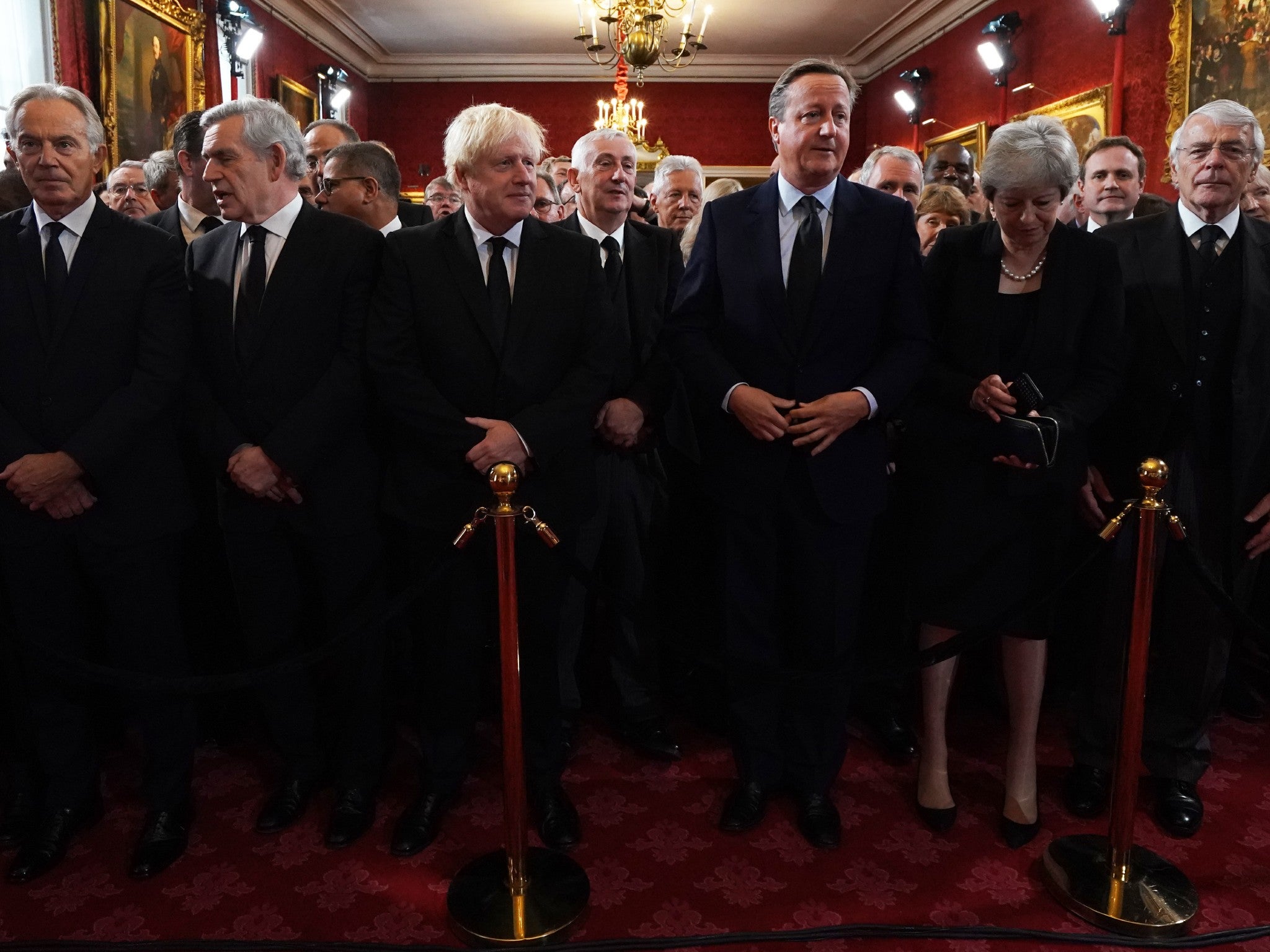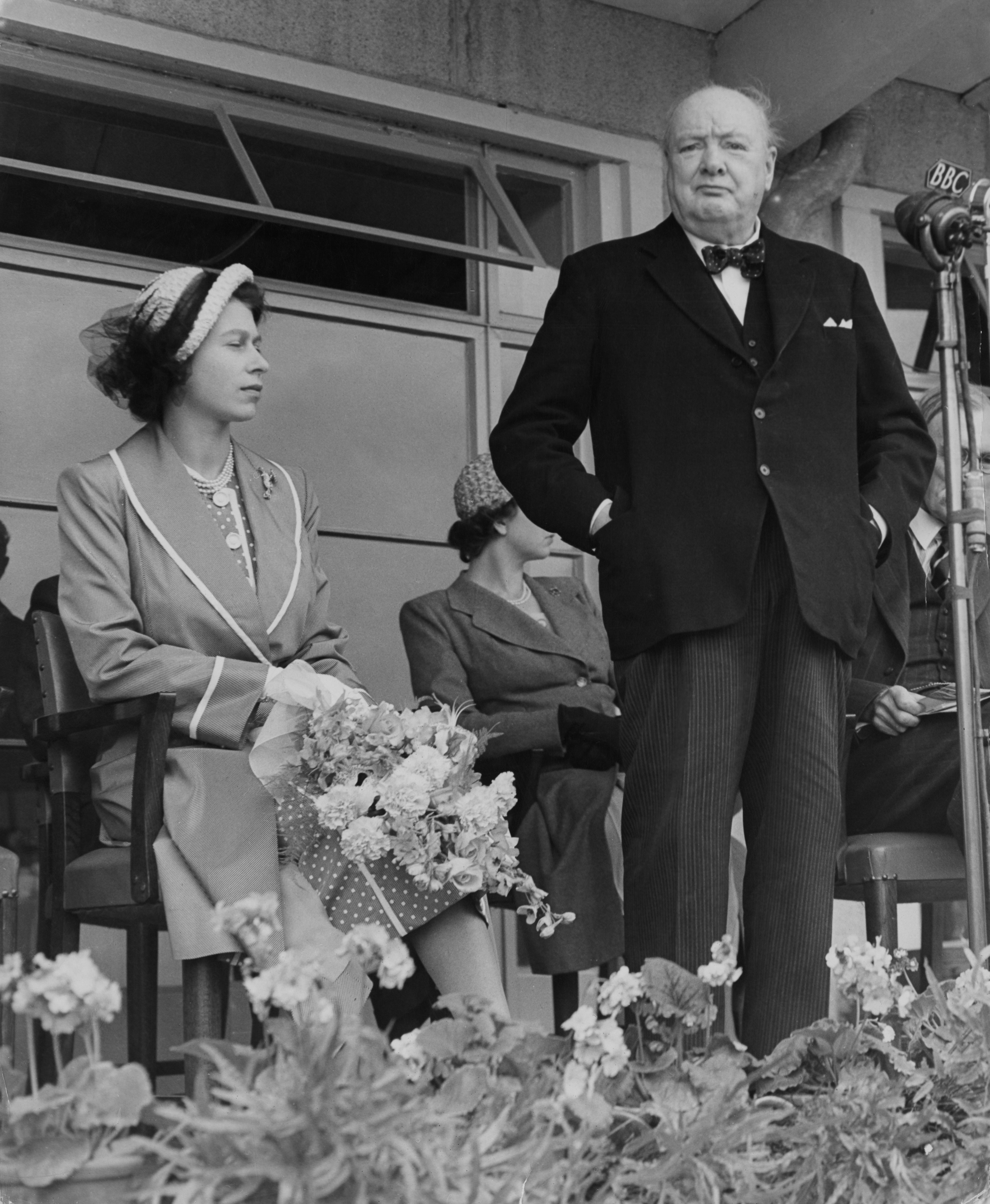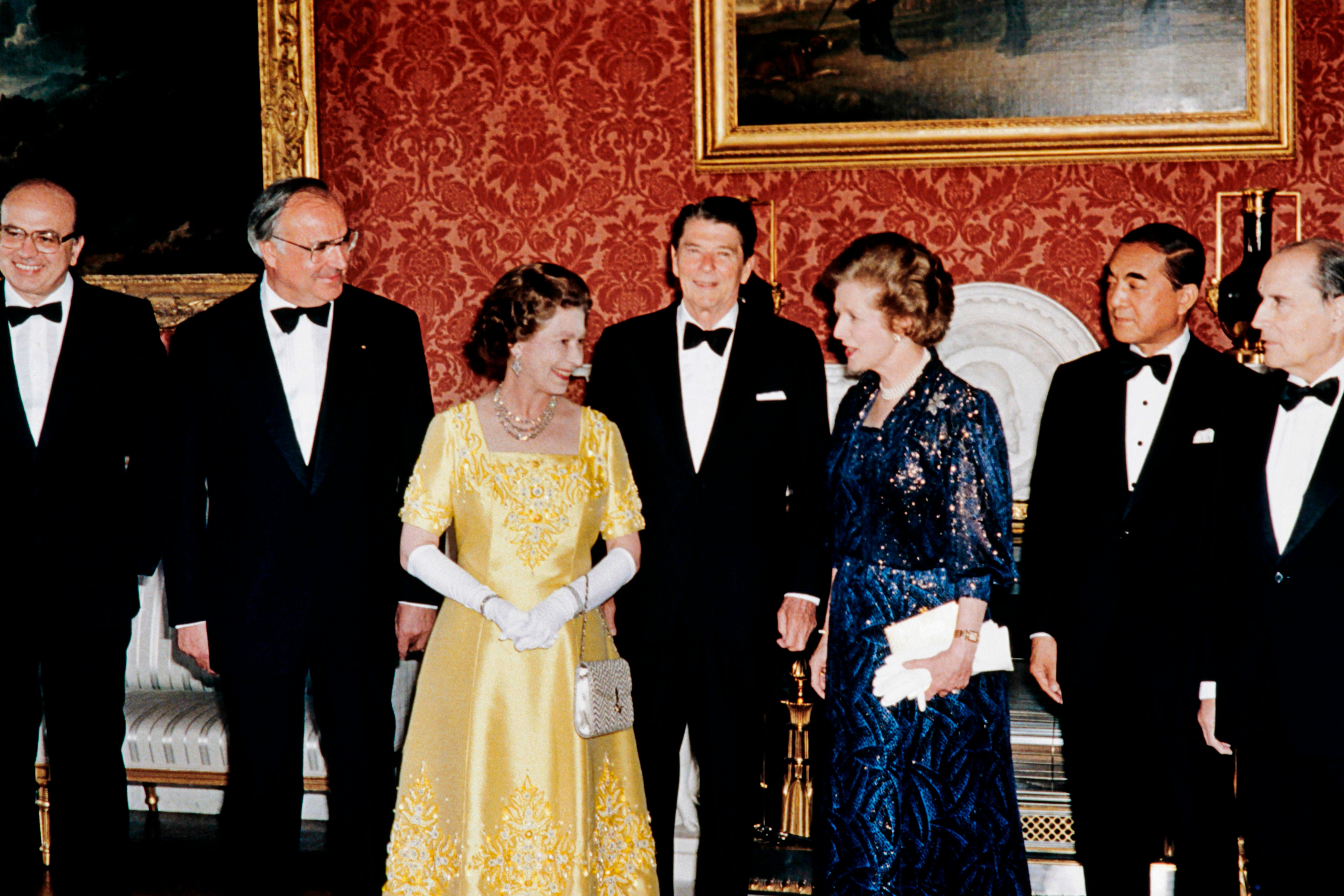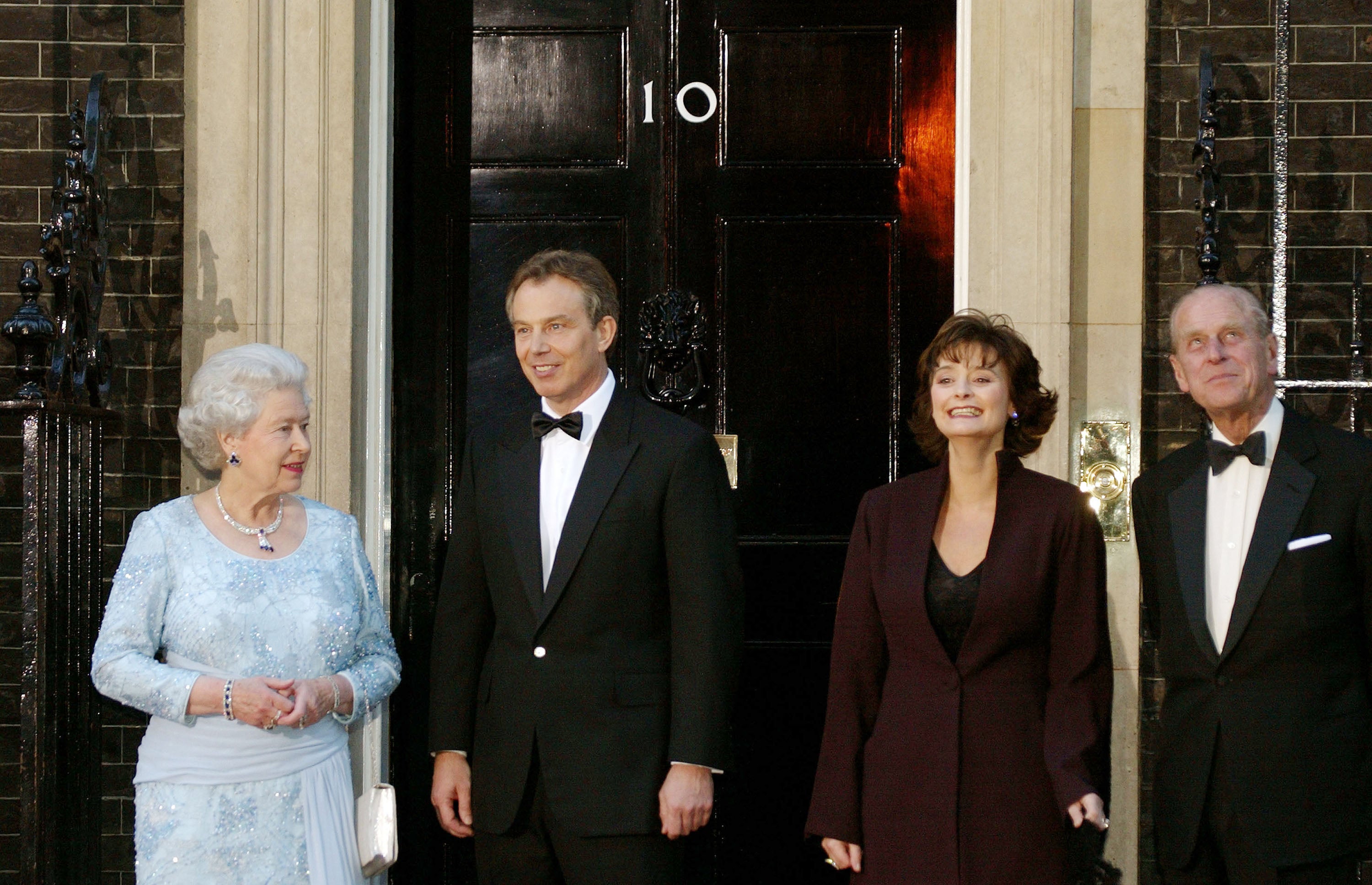All of the Queen’s prime ministers and the changing political landscape of Britain
The Queen worked with 15 prime ministers, from Winston Churchill to Liz Truss. John Rentoul looks back at a long line of relationships between the monarch and those at the apex of British politics


When Queen Elizabeth II came to the throne at the age of 25, the prime minister, Winston Churchill, was 77, and he treated her with elaborate gallantry. All the same, he was accused of “steamrollering” the new Queen in the first decision she had to make, which was what her surname should be. Churchill favoured Windsor, because it sounded English, against Prince Philip, who wanted it to be Mountbatten. She set a pattern for her reign by not deciding: she allowed her government to go ahead with Windsor, although Philip won a compromise in 1960, with Mountbatten-Windsor being used for male-line descendants without royal titles.
When Churchill suffered a stroke in 1953, some of the Queen’s officials wondered whether she might have to suggest to him that he should stand down. Again, she decided by not deciding. Churchill recovered enough to carry on until he chose to retire in 1955. Then, as the Conservative Party had nothing so vulgar as leadership elections in those days, there was a danger that the royal prerogative might mean something, and that she would have to choose who his successor should be. Fortunately, everyone assumed it would be Anthony Eden, the deputy prime minister, so she asked him.
The courtly new prime minister turned out to be surprisingly stiff and formal. He was 57 when he finally achieved the office for which he had been marked out since first serving as foreign secretary in the 1930s. He was the first divorced prime minister, which was a big deal then, but the trickiest moment of his premiership was the Suez crisis. It was terminal for his reputation, and difficult for her, too: seeing all the secret telegrams, she knew enough to know that her prime minister was going behind the backs of the Americans, but perhaps did not know enough about foreign affairs to warn him that it was bound to end in tears.
Elizabeth II was still only 30 when another old man – Harold Macmillan was 60 – “emerged” from the mysterious processes of the aristocratic wing of the Tory party. It was an emergence that, again, she endorsed passively. According to Ben Pimlott’s biography, The Queen, Macmillan pursued a “chivalrous fantasy” as prime minister, writing her long, “obsequious” memos and receiving “friendly and informal” replies.
Foreign policy was again an important part of their relationship. With her growing confidence, which Macmillan’s flattery encouraged, Queen Elizabeth took an interest in the development of the Commonwealth, as the “wind of change” blew through the legacy of empire and colonies became independent. Most newly independent countries remained members of the Commonwealth, but South Africa, which had been independent since 1931, renounced the Queen as head of state in 1961.
Macmillan’s parting shot was to induce her to make the most explicit intervention she ever made in politics, when she acted on his advice to invite his preferred candidate, Alec Douglas-Home, to form a government when Macmillan resigned, thinking he was dying, in 1963. The cabinet would have preferred Rab Butler; Tory MPs would probably have liked Reginald Maudling; and Tory members might have wanted Quintin Hogg. Macmillan inveigled the Queen into what Pimlott called “the biggest political misjudgement of her reign” by choosing Home.

Home was the closest to her of all her prime ministers in terms of his background, interests and temperament. A family friend of the Bowes-Lyons, her mother’s family, who renounced his earldom to take over as Conservative leader to try to save the 1964 election, he was as dry as a matchstick, with an equally dry wit. But he wasn’t around for long – just a year.
Harold Wilson could hardly have been more of a contrast. Their ages were closer (he was 48, she was 38), yet “he behaved towards her – unexpectedly – as an equal”, wrote Pimlott. She was “flattered by his eagerness to take her into his confidence”, and their audiences grew longer, which was noted with interest by the royal household.
By now she was in a position to advise Wilson on foreign affairs, knowing more than he did about the geopolitics of the USSR, China and Vietnam. She also sought to help the prime minister to deal with the crisis in Rhodesia, which declared independence in the name of the Queen. Wilson flew to Salisbury (now Harare) with a handwritten letter from the Queen to Ian Smith, the leader of the empire-loyalist white settlers, urging him to find a solution. Not that it did any good.
Wilson made great use of life peerages, which had been invented under Macmillan, and created no new hereditary peers, which changed the ecosystem in which the royal family lived.
The Conservative Party modernised, too. After the cries of foul when Douglas-Home was imposed on them, Tory MPs voted for their next leader. Edward Heath defeated Maudling and Enoch Powell in the first ballot in 1965. Five years later, he won a general election against all expectations.
Nevertheless, the royal family showed what it really thought of New Labour when neither Blair nor Brown was invited to the wedding of William and Catherine in 2011
“Gallantry was not Heath’s style,” said Pimlott. “He could be abrupt to the point of rudeness, and had no small talk.” Nor did he see the need to win the Queen’s favour. “She was never comfortable with him,” said a former courtier. For Heath’s part, he wasn’t interested in the Commonwealth and didn’t see any role for the Queen in foreign affairs. His great plan was to join the European Community, in which she felt she had an interest because it involved sharing sovereignty, but which he regarded as a matter for himself and the House of Commons.
After Wilson returned, like an old friend, Queen Elizabeth was one of the few who knew in advance of his plan to stand down in the middle of a parliament. James Callaghan, who had also been tipped off, succeeded him and, like Wilson, was a devoted monarchist who enjoyed his audiences. “Conversation flowed easily, and could roam anywhere,” he recalled later. “There was even a flirtatious frisson,” Pimlott wrote. “The prime minister would compliment the monarch on her clothes, and she would respond with banter.”
Then came a turning point. Margaret Thatcher was not only the first female prime minister, but she was the same age as the Queen (53). In their relationship, said Pimlott, “there was a rigidity that never softened”. Their audiences “are dreaded by at least one of them”, wrote Anthony Sampson in his Anatomy of Britain. The Queen’s unhappiness with Thatcher’s divisive social policies leaked into the daylight towards the end of her longest-serving prime minister’s tenure.
John Major was the first prime minister who was younger than the Queen. She was 64, he was 47. She “discovered in him a more relaxed, congenial visitor than his predecessor”, according to Pimlott. But they formed no special bond, despite his government and her family being, most of the time, in parallel states of permanent crisis. As the marriages of the Duke of York and the Prince of Wales collapsed in 1992, the Queen’s annus horribilis, Major’s government suffered its humiliation at the hands of the currency speculators, and was forced to struggle on for another five years.

Elizabeth II was now in her seventies; Tony Blair, the new prime minister and avowed moderniser, was 43. Like previous Labour prime ministers, he laid it on thick to reassure the public that he wasn’t a revolutionary. She reciprocated, saying in 1998: “I believe that there is an air of confidence in this country of ours just now.” This was her payback for Blair helping to save her from the anti-monarchical backlash in public opinion after the death of Diana, Princess of Wales, the previous year.
But the relationship soured, for reasons that have never been clear. She seemed to resent Blair’s advice on how to recover the monarchy’s relationship with its people after Diana’s death. It seems doubtful that the Queen would have cared about Cherie’s failure to curtsey, or about having to sing “Auld Lang Syne” at the Millennium Dome. It is perhaps more likely that, if there were other reasons for the coolness, they were to do with the royal family’s unhappiness about the ban on fox hunting, or with Blair having written about the royal family in his memoir.
The Queen knew as little as the rest of us about what to expect from Gordon Brown, with whom she had had little to do while he was chancellor. It can be guessed that he was charming and solicitous in private, but almost nothing is known about their relationship. She once asked with an amused air, “Has the prime minister got lost?”, when he wasn’t in his place at a state banquet at Windsor. And she asked, “Why did no one see it coming?” about the financial crisis – later, when she was visiting a bank – but that did not seem to be aimed only at Brown.
Nevertheless, the royal family showed what it really thought of New Labour when neither Blair nor Brown was invited to the wedding of William and Catherine in 2011, when Thatcher, Major and David Cameron were. Then there was the long and unexplained delay in appointing Blair to the Order of the Garter, a personal award made by the Queen to the “persona non garter”, which was finally announced at the start of this year.
Cameron, another 43-year-old, rosy-cheeked this time, was more of a “dosop” (definitely our sort of person), if not quite in the Douglas-Home bracket. Cameron’s brother had used to come to tea at Windsor because he was at prep school with Edward. And Cameron got his job at Conservative Central Office after a call from someone who worked at the palace.

Again, we can only guess at their relationship, as Peter Morgan tried to do in The Audience, a dramatisation starring Helen Mirren of the Queen’s conversations with her first 12 prime ministers (later elaborated on in the TV series The Crown).
Cameron would presumably have been attentive, quick, and deferential without grovelling. More than most of his predecessors, he involved the Queen in politics, although she was keen to do what she could to try to keep the United Kingdom together in the Scottish independence referendum in 2014. Her precision-crafted comment to a member of the public outside church – that she hoped people would “think very carefully” before voting – may not have changed many minds, but it was another reinforcement. It was, however, Cameron’s inadvertent revelation to an open microphone that she had “purred down the line” when told of the result that politicised the monarchy.
Hints of her opinions had been vouchsafed before and have been since. Her view of proportional representation was “not supportive”, according to Labour whip Joyce Gould when in 1997 Blair pondered electoral reform before shying away from it. And Michael Gove provided The Sun with a “Queen Backs Brexit” headline the month before the 2016 EU referendum, from comments she was alleged to have made at a lunch for privy counsellors the previous year. It is plausible that she was not unhappy about the undoing of Heath’s work of 43 years before.
Her alleged opinions became controversial again after Brexit brought her a second female prime minister, Theresa May. It was reported that the Queen and Prince Philip were frustrated by May’s unwillingness to discuss the government’s plan for Brexit at her first visit to Balmoral, two months after she became prime minister.
Boris Johnson, her 14th prime minister, got Brexit done; although, if that is indeed what the Queen wanted, it might have been a case of swings and roundabouts, as leaving the EU threatened the other union that seemed to have been secured in 2014. Johnson got Brexit done at the cost of embarrassing the Queen: he was accused of misleading her about why he wanted her to suspend parliament in September 2019. The real reason was probably to create the impression of a constitutional crisis, in order to dramatise the deadlock in the House of Commons and make a general election seem necessary.
The prorogation of parliament, ostensibly to prepare for the Queen’s Speech setting out the government’s legislative programme, was not in itself a device to force Brexit, because parliament had already passed the Benn act, which prevented Britain from leaving the EU until the terms of withdrawal had been negotiated. But some Remainers were convinced that Johnson was up to no good, which helped to foment the air of crisis he desired.
The ruse was more successful than expected, however, when the Supreme Court unanimously ruled the prorogation unlawful – after the government’s lawyers had advised that it was all fine and there was no risk of dragging the crown into politics. If the Queen was annoyed at the way that tactic blew up, with the judges in effect contradicting her suspension of parliament, that telling-off has remained hidden behind the discretion that has veiled meetings between her and her prime ministers.
Johnson turned out to be one of the shorter-serving among them, however, despite his success in forcing a general election and winning it by a handsome margin. Again, although her own view of his tenure remained unknown, the image of Queen Elizabeth sitting alone in St George’s Chapel, Windsor, at the funeral of Prince Philip, her husband, became part of the story of Johnson’s fall. Much of the nation was offended on her behalf that a lockdown-breaking party had been held at Downing Street the night before the funeral. Although Johnson wasn’t there, he was widely blamed for the lax attitude towards coronavirus laws that seemed to characterise his time in No 10.
When he left office, the Queen insisted on appointing his successor, requiring Johnson and Liz Truss to fly to Balmoral for the handover of power. Prince Charles, who had read out the last Queen’s Speech on his mother’s behalf, could have made the appointment at Buckingham Palace as usual, but one of the Queen’s last acts was to fulfil her constitutional duty. Thus her relationship with her 15th and final prime minister was a short one, consisting of a single conversation of no longer than half an hour.
The Queen’s prime ministers came and went, were acclaimed and, more usually, reviled. She carried on, always popular and respected, except for one moment of incipient crisis in 1997, from which she soon recovered. As one friend for half a century said to Pimlott: “The Queen’s strength is that she doesn’t change very much.”
Join our commenting forum
Join thought-provoking conversations, follow other Independent readers and see their replies
Comments


Bookmark popover
Removed from bookmarks